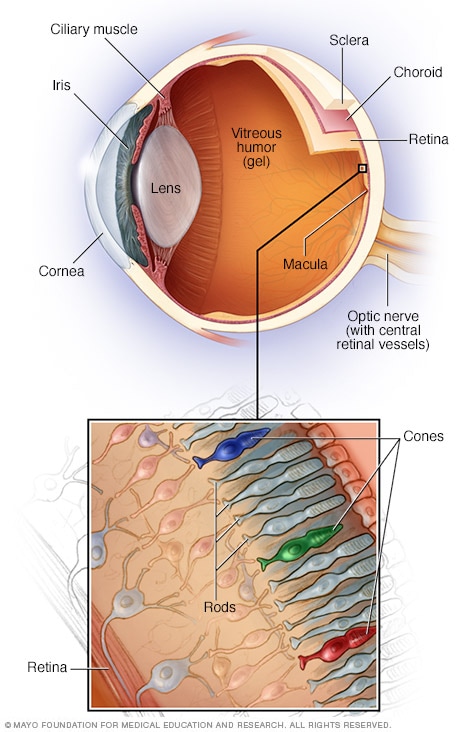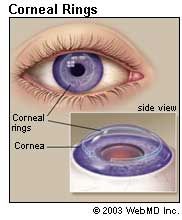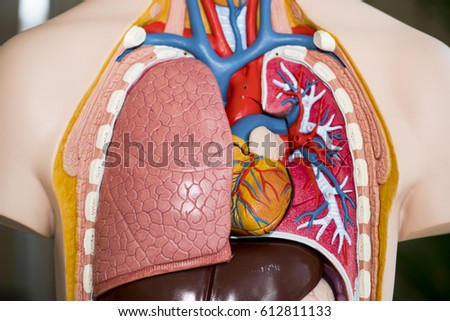Schizophrenia is a mental disorder that usually appears in late adolescence or early adulthood. Characterized by delusions, hallucinations, and other cognitive difficulties, schizophrenia can often be a lifelong struggle.
In this article, we will cover the causes, symptoms, and treatment of schizophrenia.
Fast facts on schizophreniaHere are some key points about schizophrenia. More detail and supporting information is in the main article.
- Schizophrenia affects an estimated 1 percent of the population.
- Symptoms include delusions, hallucinations, and disorganized thoughts.
- Diagnosing schizophrenia comes only after other disease have been ruled out.
What is schizophrenia?
Schizophrenia most commonly strikes between the ages of 16 and 30, and males tend to show symptoms at a slightly younger age than females. In many cases, the disorder develops so slowly that the individual does not know that they have had it for many years. However, in other cases, it can strike suddenly and develop quickly.
Schizophrenia affects approximately 1 percent of all adults, globally. Experts say schizophrenia is probably many illnesses masquerading as one.
Symptoms of schizophrenia
Schizophrenia is often a life-long condition.
A sizable proportion of people with schizophrenia have to rely on others because they are unable to hold a job or care for themselves.
Many may also resist treatment, arguing that there is nothing wrong with them.
Some patients may present clear symptoms, but on other occasions, they may seem fine until they start explaining what they are truly thinking.
The effects of schizophrenia reach far beyond the patient – families, friends, and society are affected too.
Symptoms and signs of schizophrenia will vary, depending on the individual.
The symptoms are classified into four categories:
- Positive symptoms – also known as psychotic symptoms. For example, delusions and hallucinations.
- Negative symptoms – these refer to elements that are taken away from the individual. For example, absence of facial expressions or lack of motivation.
- Cognitive symptoms – these affect the person’s thought processes. They may be positive or negative symptoms, for example, poor concentration is a negative symptom.
- Emotional symptoms – these are usually negative symptoms, such as blunted emotions.
Below is a list of the major symptoms:
- Delusions – the patient displays false beliefs, which can take many forms, such as delusions of persecution, or delusions of grandeur. They may feel others are attempting to control them remotely. Or, they may think they have extraordinary powers and abilities.
- Hallucinations – hearing voices is much more common than seeing, feeling, tasting, or smelling things which are not there, however, people with schizophrenia may experience a wide range of hallucinations.
- Thought disorder – the person may jump from one subject to another for no logical reason. The speaker may be hard to follow or erratic.
Other symptoms may include:
- Lack of motivation (avolition) – the patient loses their drive. Everyday actions, such as washing and cooking, are neglected.
- Poor expression of emotions – responses to happy or sad occasions may be lacking, or inappropriate.
- Social withdrawal – when a patient with schizophrenia withdraws socially, it is often because they believe somebody is going to harm them.
- Unawareness of illness – as the hallucinations and delusions seem so real for patients, many of them may not believe they are ill. They may refuse to take medication for fear of side effects, or for fear that the medication may be poison, for example.
- Cognitive difficulties – the patient’s ability to concentrate, recall things, plan ahead, and to organize their life are affected. Communication becomes more difficult.
What are the causes schizophrenia?
Experts believe several factors are generally involved in contributing to the onset of schizophrenia.
Evidence suggests that genetic and environmental factors act together to bring about schizophrenia. The condition has an inherited element, but environmental triggers also significantly influence it.
Below is a list of the factors that are thought to contribute towards the onset of schizophrenia:
Genetic inheritance
If there is no history of schizophrenia in a family, the chances of developing it are less than 1 percent. However, that risk rises to 10 percent if a parent was diagnosed.
Chemical imbalance in the brain
Experts believe that an imbalance of dopamine, a neurotransmitter, is involved in the onset of schizophrenia. Other neurotransmitters, such as serotonin, may also be involved.
Family relationships
There is no evidence to prove or even indicate that family relationships might cause schizophrenia, however, some patients with the illness believe family tension triggers relapses.
Environmental factors
Although there is no definite proof, many suspect trauma before birth and viral infections may contribute to the development of the disease.
Stressful experiences often precede the emergence of schizophrenia. Before any acute symptoms are apparent, people with schizophrenia habitually become bad-tempered, anxious, and unfocused. This can trigger relationship problems, divorce, and unemployment.
These factors are often blamed for the onset of the disease, when really it was the other way round – the disease caused the crisis. Therefore, it is extremely difficult to know whether schizophrenia caused certain stresses or occurred as a result of them.
Drug induced schizophrenia
Marijuana and LSD are known to cause schizophrenia relapses. Additionally, for people with a predisposition to a psychotic illness such as schizophrenia, usage of cannabis may trigger the first episode.
Some researchers believe that certain prescription drugs, such as steroids and stimulants, can cause psychosis.
Treatments for schizophrenia
![[Distressed young man]](https://cdn1.medicalnewstoday.com/content/images/articles/036/36942/distressed-young-man.jpg)
Ensuring the patient continues with medication is the key to successful treatment.
With proper treatment, patients can lead productive lives.
Treatment can help relieve many of the symptoms of schizophrenia. However, the majority of patients with the disorder have to cope with the symptoms for life.
Psychiatrists say the most effective treatment for schizophrenia patients is usually a combination of:
- medication
- psychological counseling
- self-help resources
Anti-psychosis drugs have transformed schizophrenia treatment. Thanks to them, the majority of patients are able to live in the community, rather than stay in a hospital.
The most common schizophrenia medications are:
- Risperidone (Risperdal) – less sedating than other atypical antipsychotics. Weight gain and diabetes are possible side effects, but are less likely to happen, compared with Clozapine or Olanzapine.
- Olanzapine (Zyprexa) – may also improve negative symptoms. However, the risks of serious weight gain and the development of diabetes are significant.
- Quetiapine (Seroquel) – risk of weight gain and diabetes, however, the risk is lower than Clozapine or Olanzapine.
- Ziprasidone (Geodon) – the risk of weight gain and diabetes is lower than other atypical antipsychotics. However, it might contribute to cardiac arrhythmia.
- Clozapine (Clozaril) – effective for patients who have been resistant to treatment. It is known to lower suicidal behaviors in patients with schizophrenia. The risk of weight gain and diabetes is significant.
- Haloperidol – an antipsychotic used to treat schizophrenia. It has a long-lasting effect (weeks).
The primary schizophrenia treatment is medication. Sadly, compliance (following the medication regimen) is a major problem. People with schizophrenia often come off their medication for long periods during their lives, at huge personal costs to themselves and often to those around them.
The patient must continue taking medication even when symptoms are gone. Otherwise they will come back.
The first time a person experiences schizophrenia symptoms, it can be very unpleasant. They may take a long time to recover, and that recovery can be a lonely experience. It is crucial that a person living with schizophrenia receives the full support of their family, friends, and community services when onset appears for the first time.


















![[Distressed young man]](https://cdn1.medicalnewstoday.com/content/images/articles/036/36942/distressed-young-man.jpg)